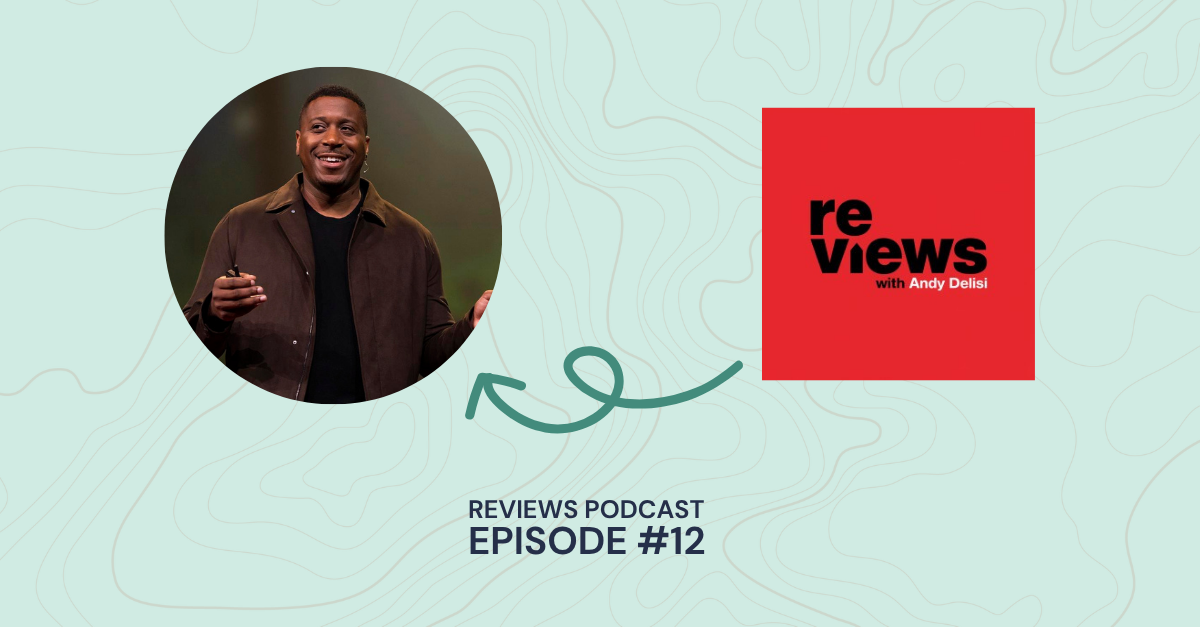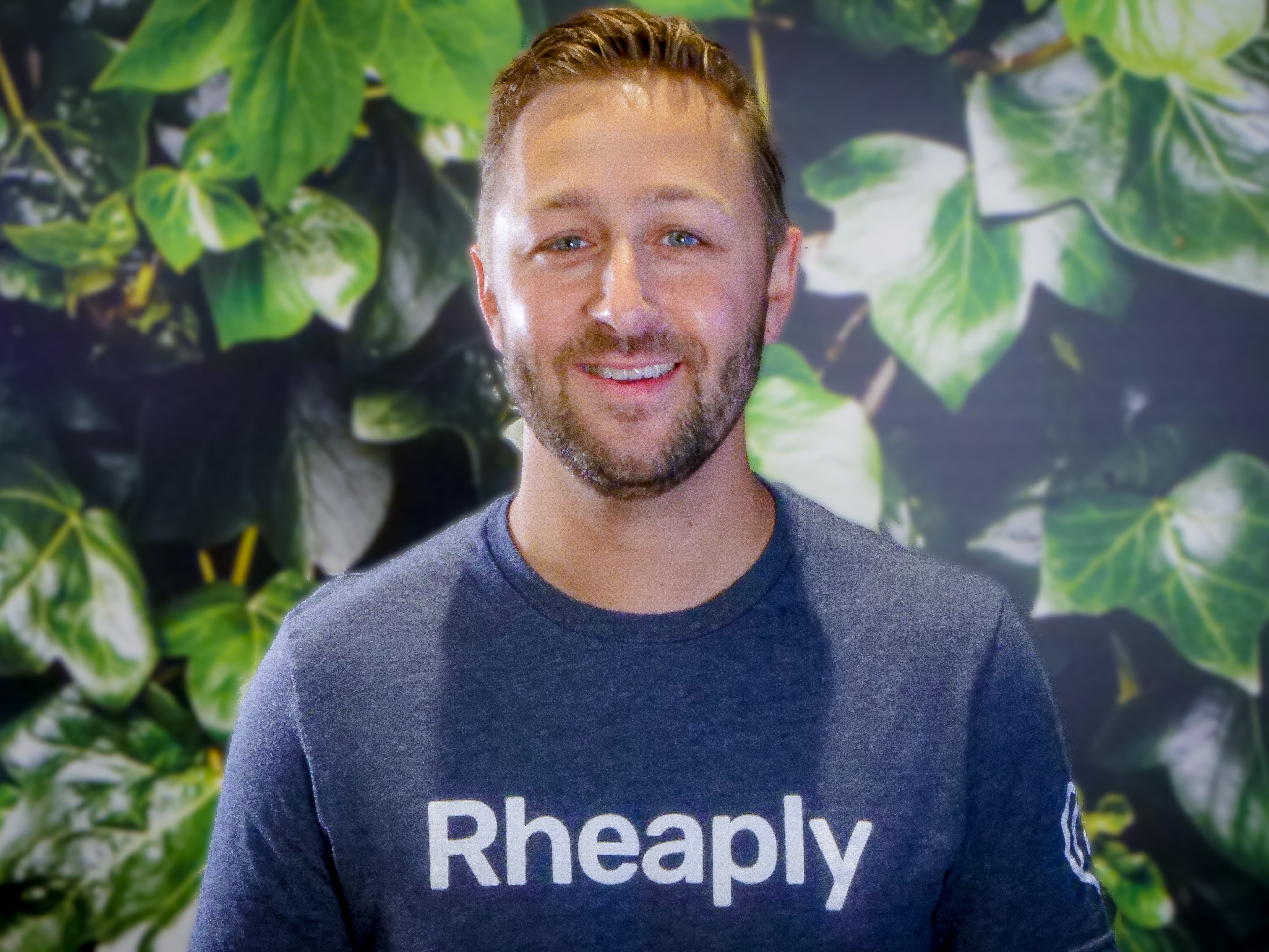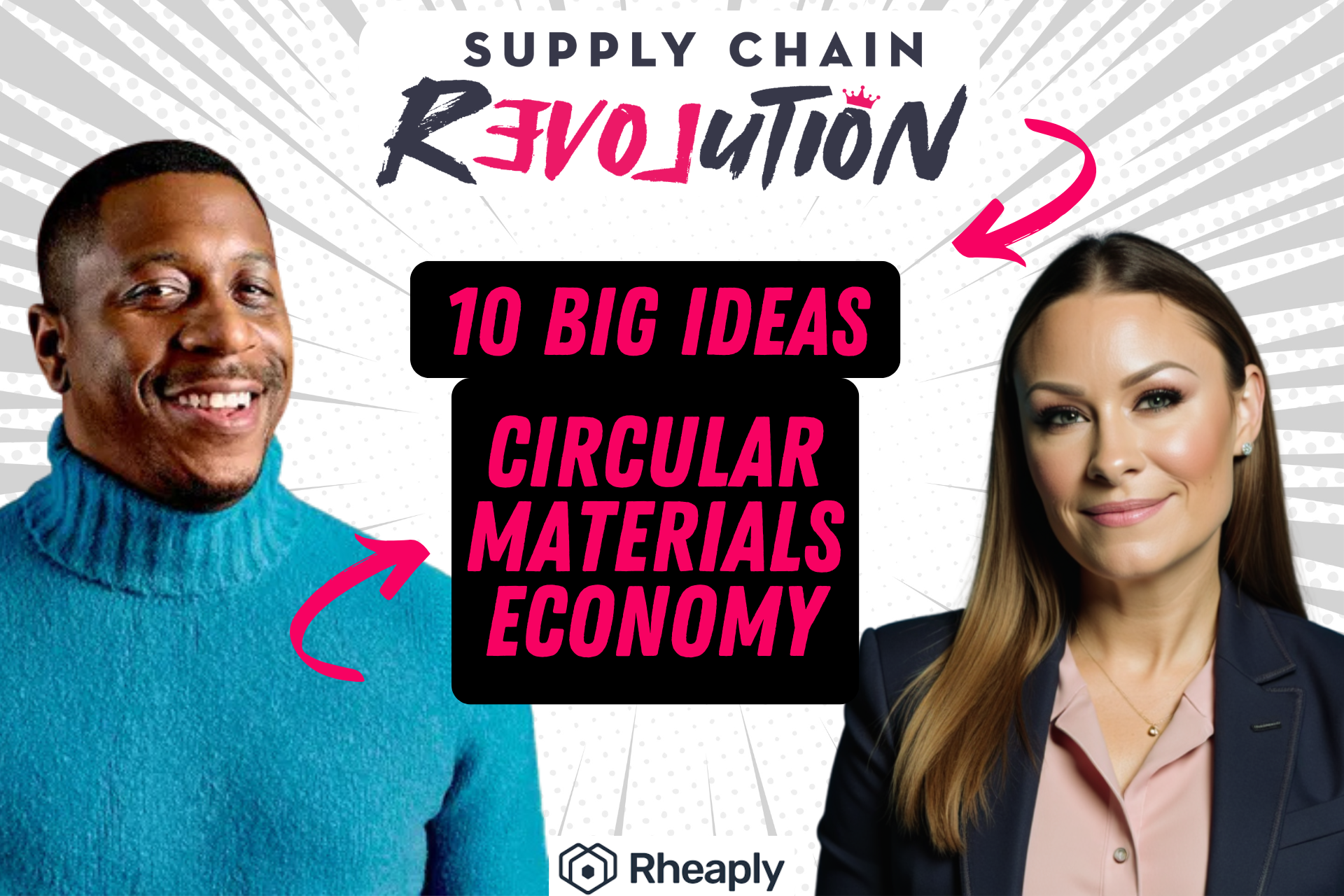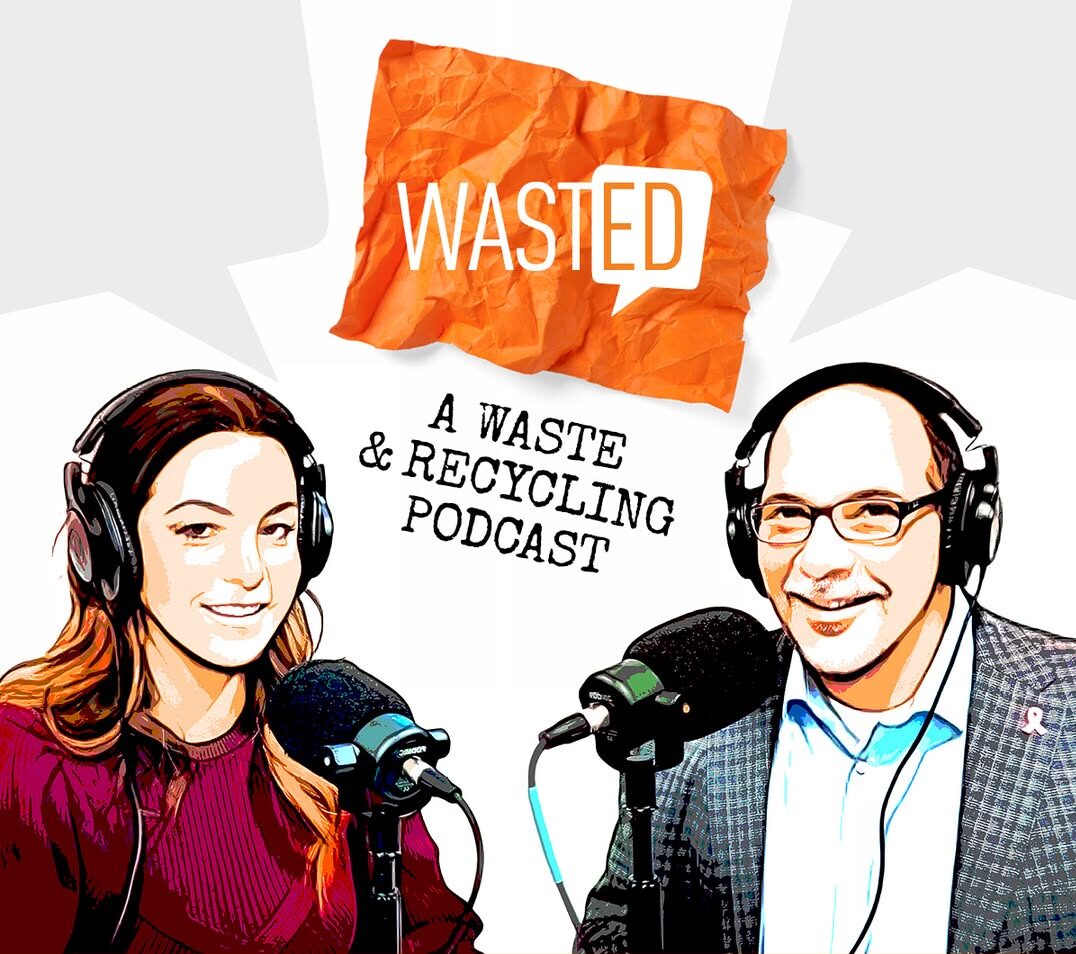Rheaply CEO Dr. Garry Cooper Jr. joins Besler’s Hospital Finance Podcast to discuss the circular economy in healthcare. Host Kelly Wiseness gets Garry to dive deep into the origins of Rheaply and how the platform works.
Highlights of this episode include:
- Why Rheaply was created?
- Partnership with Allina Health
- How circularity is evolving in healthcare
Audio Transcript:
Kelly Wisness: Hi, this is Kelly Wisness. Welcome back to the award-winning Hospital Finance Podcast. We’re pleased to welcome Dr. Garry Cooper, the cofounder and CEO of Rheaply, a tech company that enables Fortune 500 companies, government agencies, and universities to better visualize, quantify, and utilize their physical resources. He also serves on the boards of directors of P33 Chicago and 1871, and the investor team at Long Jump Ventures, of which he is a founding partner. Previously, Dr. Cooper served on the faculty of Northwestern University and facilitated supply chain and performance improvement for enterprise businesses at Ernst & Young. Dr. Cooper has published in high-impact, peer-reviewed international journals and holds a U.S. patent. He has a PhD in neuroscience from Northwestern University, a certificate in management from the Kellogg School of Management, and a BS and BA in mathematics and chemistry from Indiana University. Thank you for joining us today, Dr. Cooper, to discuss creating a circular economy in healthcare.
Dr. Garry Cooper: I’m excited to be here. Thanks for having me.
Kelly: Well, great. Well, let’s just jump in today, shall we? Can you tell me what Rheaply does, and how does it work?
Dr. Cooper: Yes, it’s my favorite thing to talk about. So, the way Rheaply works is it’s a technology platform that creates reuse within a large kind of multilocation organization. So, we really focus on reuse, if you think about your sustainability training back in elementary school of reduce, reuse, recycle. We really focus on reuse and build technology for reuse for organizations. And why that’s so important, as you can imagine, in places like Google or in places like in hospitals, there are many locations with many physical things, whether they be consumable products, whether they be capital equipment. And if one person is in one building, do they actually know what the things are available in all the other buildings? And so, because they don’t have that visibility, what we tend to see is that folks order things that they shouldn’t, and then other folks potentially throw away or store things that they shouldn’t.
So Rheaply kind of brings everyone together at an organization and connects them to the physical products that are already available internally that they can use for their work so they don’t have to purchase things externally. And then we also then help when those items internally become end of life, whether they be hospital beds, whether they be even something as mundane as furniture. At some point, everything becomes end of life for an organization, so where does it go? And so then, also, our platform connects to lots of businesses, lots of recycling organizations so that we also manage the disposition of the item. So really, what Rheaply tries to do in organizations is kind of bringing it all together, is you like to create internal reuse, and then we just try to extend the life of every single item so that nothing goes to waste. And then from a sustainability perspective, we measure how much carbon are we saving the organizations, how much waste are we diverting, how much money are we saving so they can report those things for their sustainability and ESG reports.
Kelly: Wow, that is very interesting and sounds like a very needed service. Well, what is your background, and why did you create Rheaply?
Dr. Cooper: Yeah, so my mother always laughs like, “Wow, neuroscience and sustainability, that’s something I saw coming.” So, my background is a science nerd, so I spent more than 15 years in the lab working on a therapeutic measure for the disease, modify idiopathic Parkinson’s disease. So, I was really working on and continue to help Northwestern towards finding a cure. And I can kind of get into details of what my research is about, but I happen to be in the largest and probably most well-funded lab at Northwestern when I was a student there, a PhD student there. And I would go to lunch with other graduate students from other labs on my floor, and they would always say things like, “Man, if I had that antibody, if I had that piece of equipment, if I had that fill in the blank, I would be able to do– I would be able to pilot these experiments, I would be able to try these different techniques, but I don’t,” and I would be sitting there at lunch think, “Wow, we have that kind of stuff in our back room, in a refrigerator or freezer somewhere, and we’re not even using it,” so just connecting the dots, I wasn’t thinking about starting a company. I just started a sharing program at Northwestern.
So, I got a cart – it’s kind of a famous cart now – and I would pile things that we no longer needed in our lab onto this cart, and once a month or so, push it around the floor that I was on at the hospital and just redistribute the things that we weren’t using to other labs who could make better use of them, people loved that. And when I left my postdoctoral fellowship at the hospital, I went into a supply chain consulting for Ernst & Young in the life science and biotech space. And two, three years into my consulting career, I would still get emails from people at Northwestern like, “Hey, Garry, where’s the cart? Where’s the cart?” and, “I haven’t seen you in a long time,” messages like this, and I would think, “I don’t know. I haven’t been there in three years. I don’t know where this cart is.”
But one night, I was with one of my best friends who’s one of my cofounders and chief product officer, and I just got one another one of these emails to my cell phone. I said, “We should just build out some type of platform where you don’t need this cart, where you don’t need one person. It doesn’t have a single point of failure. It’s a program. Large organizations that buy billions of dollars of physical things each year should have some type of program where they’re trying to maximize the utilization, visibility of the things that are sitting all around their campus of which they’re paying rent for and then have easy pathways that we can get rid of these items when you no longer need them in a eco-friendly, sustainable way.”
And so we got started working on that concept seven and a half years ago, and a year into nights and weekends and just thinking and talking to folks, a company was born. And I didn’t know anything about circular economy, or I didn’t really know too many things, actually, about sustainability. Again, I was a neuroscience guy who had spent three and a half years thinking about supply chain issues. But I had enough horse sense and enough training to know that the problem that we saw at Northwestern was pervasive in every medical research center and probably every hospital. And so we got working on that in November 1 of 2016 and haven’t looked back.
Kelly: Yeah, that really does sound like a needed service. And you really did kind of bring something to the forefront that was certainly needed. Can you tell us more about your partnership with Allina Health?
Dr. Cooper: Absolutely. So, I love Allina Health, and it’s one of my favorite to talk about. So, Allina Health in Minnesota is a not-for-profit healthcare system, which is both in Minnesota and Wisconsin, if I’m remembering correctly. And just like a lot of different organizations, they had to close several locations, they had to remodel certain locations. And what that causes is where do things go when we shut that building down? Do we just sell them off, or could people within our own system be able to reuse those items? And so we kind of intercepted when they were closing down a few locations, which is always a good place to kind of start a reuse program because you can get people excited about the things that they can kind of take off the platform and reuse and really kind of get that kind of almost internal network effect going.
So, we started a pilot with them, and that pilot has actually won a couple awards. And we have a case study published on our website at rheaply.com in our resource library, but at a high level, in a few short months, we were able to divert, I think, 6,228 pounds of so-called waste from landfill or incineration. We were able to help them save over $80,000 in procurement costs in just a month or so with–
Kelly: Wow.
Dr. Cooper: –two buildings. I mean, this is really a restricted pilot. And this is all equivalent to something like 60 tons of paper or 17 tons of metal were recycled as well as a part of this program. So, if all of your listeners and everyone who has ever worked inside a medical center or a hospital understand that you have to buy and purchase things in a preventative way, right? You never really want to run out of things when you need them. But that only creates a scenario that you always typically have too much. And so then the question is, when we start shutting down buildings or remodeling spaces, what do we do with the stuff that we’ve already purchased and too much? And so we were able to show with Allina how to do that at scale at a hospital system or healthcare system. And so I’m happy also to announce that we’ve moved that small pilot to be fully adopted across the Allina healthcare network. So now, they have reuse across their entire healthcare system. They’re a leader in this space, and we’re really excited for other hospital systems to really take that lead and kind of integrate a reuse program campus wide.
Kelly: Well, congratulations on that. That sounds like a great partnership and what a very successful pilot you had with them.
Dr. Cooper: Yeah, and we also just love them. They’re amazing and–
Kelly: That always helps, doesn’t it?
Dr. Cooper: Yeah.
Kelly: Well, how do you see circularity evolving in healthcare?
Dr. Cooper: Yes, I kind of think of two main goals. So, I think one goal that COVID and the pandemic illuminated was how fragile our four logistics and global supply chains are. It was a tremendous, I think, miss that in the middle of healthcare professionals on the front line fighting the unknown virus of COVID, they were having to find trash bags. They were having to do crazy things to find ventilators. And so what we were able to do in Chicago with Mayor Lightfoot was we used our technology, which is, again, bring circularity or reuse to an organization or a system. We were to use our technology to create PPE marketplace or sharing program citywide. So if you are a tattoo artist, a veterinarian, and you didn’t need your PPE or your ventilator for a dog or for doing a tattoo but maybe someone on the front lines could, we created a system under which that could work in Chicago, and in 60 days, we were able to move 200,000 pieces of PPE that were not sourced from Walgreens or Amazon or a vendor, but were sourced locally.
Kelly: Wow.
Dr. Cooper: And so it really kind of showed how even in a crisis scenario, the power of being connected, of knowing who has what and when, that’s kind of really the power of circularity. But when I think about not in the kind of pandemic time, but in a more steady state time, the power of circularity for a hospital is kind of threefold. One, like with Allina, it’s going to help you reduce your costs. One of my advisors told me every hospital is a billion-dollar business. So, when you’re spending nearly a billion dollars plus each year, the question is if we can just actually spend less than 1% or 2% tremendous savings, right?
So, the first thing we talk to hospital and healthcare systems is about circularity, internally, in a steady state scenario will help you save money. Second, and near and dear to our hearts, is to run our global climate fight. I’m speaking at COP27, the UN’s big conference, where we are convening over almost 200 country leaders and CEOs to talk about how do we get to our 2050 goals or the goals set in Paris during the Paris Agreement. Well, one thing is that every single organization has to reduce their carbon output. And so one way to do that is through circularity. And so we actually measure, if you’re being circular, if you’re reusing items on our platform, how much carbon you’re actually pulling out of the system, and thus you can kind of report that to your overarching sustainability goals.
And then lastly, and, maybe, something that people don’t think about is just the items that go to landfill. The really important thing about the linear economy, the one that we’re in right now, which is where we take material out of the Earth, we make something with it, we sell those products, and then when we’re done with those products, we dispose them into the ground, so it’s very linear. The problem is we’re running out of material every single year, something called Earth Overshoot Day, the day of which we’ve used all the natural resources the Earth produces for a year, moves up in the calendar. This year was early August, and each year, it moves up further. So really, we have to be able to reuse and recycle the things that we have above ground at a much higher clip, and circularity positions any kind of business model or economic model to be able to do that.
So really just kind of in sum, I think in the kind of pandemic kind of crisis scenarios, circularity as an operating model to kind of connect supply to demand in a very important way. But even in a steady state scenario, when you think about reducing costs, when you think about reducing waste and carbon, it’s such an important play. And so one of our visions at Rheaply — or our vision at Rheaply is circularity for every business, because if every business can be circular what the Ellen MacArthur Foundation has shown, is that we’re going to be able to reduce our global greenhouse gas emission task by 55%, more than moving everything to renewables, more than going to electric on everything. So, every organization can be circular. We’ll get over halfway to where we need to be by 2050.
Kelly: Wow, that is really insightful. Thank you. And what are your main goals?
Dr. Cooper: Yeah, so one of our main goals, it starts with making, as I said, circularity for every business. But how can it be local? How can it be accessible and equitable? So one of the things that we’re doing at Rheaply is trying to set up reuse marketplaces– or local reuse marketplaces like we did with the PPE marketplace that I described with Mayor Lightfoot here in Chicago. So, if I am a hospital in Minnesota and I no longer need fill in the blank item, I can post it on this platform of trusted local businesses and donate them or sell them to people who might need it. If no one needs it there, then there are local recyclers and liquidators and disposition partners who can take those items for me.
So, the first thing we have to do is make it so accessible that it’s easier than the trash, right? There is an ease to throwing things away. I mean, bigger things are kind of hard to throw away. You can’t just put them out back. But what we’re trying to do at Rheaply is think about in every location, can we find a way that technology can drive waste management and not just a dumpster? That’s kind of one thing. The second is if we’re able to do that, circularity in every community has been shown to create 20 to 30 X or multiple, more jobs than recycling or waste management. Because if you could think about it, right, instead of throwing away a hospital bed or throwing away a machine, and someone had to come pick that up, and someone had to repair it, repolish it, resell it, and then ship it to the person who bought it, you created four to five jobs just in that value chain I just described. So, there’s 20 or 30 times more jobs if local towns and cities adopt circularity and the businesses within them do so.
So that’s something that we kind of talk about is bringing circularity, making it accessible to every city and being a jobs program and not necessarily just being about sustainability or about being eco-friendly. I think important though in that strategy and going to different cities in the United States is thinking about the communities that are left behind, because where our landfills are, so where trash normally ends up, because less than 5% of things that you actually recycle are recycled. So, where most of the trash ends up are in communities that are Black and Brown folks, that are communities that are in our poorest areas. Those are where the landfills are. And quite frankly, those are where the most penal health outcomes are as well. And so the other really amazing thing about circularity is that it has not only a jobs program as I previously described, it can also be kind of an indirect healthcare one so that we’re not sending trash, and we’re not sending toxins to communities that are left behind in our cities. We’re actually sending value.
And then lastly, one of the things that we’re focused on is– I really sincerely hope that the exercise that we got with COVID-19 was one that we won’t see again. But I’m not planning that that will be the case. And so as we think about being more resilient as a society and being more resilient in whatever town or city that you live in, we just have to be more connected. People have to be connected. We can’t have public health officials coming on a phone line asking people just to call in if they have a ventilator or if they have a couple spare pieces of PPE in the middle of a crisis.
So, we have to figure out how to be more resilient to something like COVID-19 from a response perspective in the future. And we at Rheaply, given the work that we’ve done in the past, starts with being connected. And so all hospitals being connected to each other in some way, hospitals being connected to local medical schools, medical schools being connected to businesses and so forth and so on. And we think a connected community is more resilient to pandemic-like events in the future. So those are some of our main goals as it pertains to circularity in healthcare.
Kelly: Wow, those are some really good examples. Thank you. And thank you so much for joining us today, Dr. Cooper, and for sharing your valuable insights and knowledge with us.
Dr. Cooper: Oh, thank you. And it’s such important that I think people walk away with just really a clear understanding of circularity in the circular economy. So, I just want to really repeat that the circular economy is just one that’s regenerative. It doesn’t presume that we have to dig things out of the ground and make products with them that we then at some point bury in the ground again. The circular economy says we have enough stuff above ground if we just use and reuse it over and over again, and then that regenerates natural resources. And so what we’re trying to do at Rheaply is just build a technology infrastructure for any organization who wants to be a part of the circular economy to be able to do so very easily.
Kelly: Okay, and Dr. Cooper, if someone wants to connect with you or learn more about Rheaply, how best can they do that?
Dr. Cooper: Oh my gosh, please connect with us. We would love to talk with you. One of our chief value props is that — or our core values at Rheaply is to be helpful. So, we would love to be helpful, just even if it’s just educationally. So please reach out to me. Actually, you can reach out directly to me. I’m Garry, G-A-R-R-Y, at Rheaply, R-H-E-A-P-L-Y, dot com. I’m on LinkedIn. I’m a power LinkedIn user. I’m just Garry, G-A-R-R-Y, Cooper on LinkedIn. You’ll see my smiling face. But if you want to just know more information about Rheaply before connecting with me or someone on my team, just go to rheaply.com. We have a whole library of all our case studies of other companies and other businesses like Allina who’s doing it right, quite frankly. And feel free to learn from the folks that we are championing. And we’d love to talk with you.
Kelly: That sounds great. And thank you all for joining us for this episode of the Hospital Finance Podcast, until next time.
[music] This concludes today’s episode of the Hospital Finance Podcast. For show notes and additional resources to help you protect and enhance revenue at your hospital, visit besler.com/podcasts. The Hospital Finance Podcast is a production of BESLER | SMART ABOUT REVENUE, TENACIOUS ABOUT RESULTS.
- Description
- Transcript

 by Tom Fecarotta
by Tom Fecarotta 
